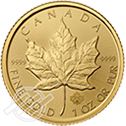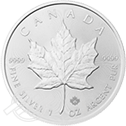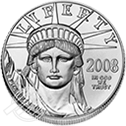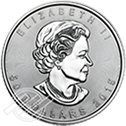GLD and Gold ETFs vs. Owning Physical Gold
There are many ways for investors to get exposure to the precious metals markets. You can buy shares of mining companies, buy shares of exchange-traded funds (ETFs) backed by gold or silver, buy or sell gold or silver futures contracts, and even purchase gold or silver certificates.
While investments like certificates and ETFs provide exposure to precious metals markets, they’re not a substitute for purchasing real, physical gold or silver. Let’s walk through how GLD and other ETFs compare to physical gold ownership and when they might make sense for your investment priorities—and when they don’t.
What Are Gold ETFs?
Gold ETFs give investors a vehicle for participating in the gold market without having to take physical delivery of the gold. ETFs are typically traded on a regulated exchange where investors purchase shares in the fund. Each share represents fractional, undivided ownership interest in the trust’s assets. These assets take the form of gold bullion and sometimes cash.
What Is GLD?
GLD—or the SPDR Gold Shares ETF—is one of the largest gold ETFs. As of August 2023, the fund’s roughly 29 million ounces held a net asset value (NAV) of over $56 million. Each of the ETF’s shares is worth 0.06052 ounces.
Other Gold ETFs
While GLD is one of the most popular ETFs, it’s not the only one. Other common choices for precious metals investors include the following funds:
- iShares Gold Trust (IAU): IAU holds over 14.152 million ounces and a NAV of $27.3 billion. The iShares Gold Trust is organized as a trust that includes physical gold bars at vaults in London and New York.
- VelocityShares 3x Long Gold ETN (UGLD): UGLD is a leveraged exchange-traded note (ETN) that is more complex than traditional gold ETFs. It’s meant for short-term holding.
- DB Gold Double Short ETN (DZZ): DZZ is an ETN that moves inversely to gold prices.
Are Gold ETFs the Same as Physical Gold?
Buying gold ETFs isn’t the same thing as purchasing physical gold, and it’s incredibly important that you understand this before you make either investment.
When you buy a gold ETF, you’re buying shares of a trust that holds gold bullion. When you buy physical gold, you’re taking direct ownership of actual gold coins or bars you can hold in your hand. You’re also not purchasing fractional shares. You’ll own each ounce of gold outright and can sell it for its current value.
Of course, buying physical gold comes with its own quirks. You’ll have to figure out a storage solution, either in your own home, in a safe deposit box, or in the custody of a depository. And while this does add to the cost of gold ownership, it gives you direct ownership and control over your gold.
Are GLD and Other Gold ETFs Good Investments?
GLD and other gold ETFs might be considered a good investment for specific types of investors. They’re an easy way to gain exposure to gold markets without the need to physically purchase, store, or insure gold.
Before you invest, do your research and consider your financial goals. Weigh them against your risk tolerance and investment timeline. That said, always consult with your financial advisor before you make an investment.
Risks of Investing in GLD
Investing in GLD (and other ETFs) does carry a few significant risks:
- Owning shares of an ETF such as GLD does carry counterparty risk. There could be accounting or custody errors, theft, or other issues that affect your investment.
- You do not have access to the gold held by the trust. In the unlikely—yet possible—case of an economic, currency, or geopolitical crisis, you have no actual gold to purchase goods or services or transact with.
- You have no way to audit the holdings of a gold-backed ETF or trust. You must rely on the trust and its auditors to tell you how much actual gold the trust holds.
- You must pay a management fee to participate in such an investment. Management fees can have an impact on your investment and eat away at any proceeds or profits.
- You cannot use your shares to buy basic necessities or barter. In a real crisis, shares of GLD may simply be viewed as a piece of paper.
- If gold prices decline, your investment can lose value without the benefit of owning and maintaining the gold in your possession.
- You essentially have zero control. You are told how much gold the fund owns and where it is held. You have no control over the management of the gold.
Benefits of Investing in Physical Gold
Buying physical gold offers plenty of perks compared with purchasing shares in mining companies or ETFs. When you purchase physical gold bullion, you enjoy the following benefits:
- You decide how much gold to buy.
- You decide where to store your gold bullion. You can store your gold at home, in a safe deposit box, in a depository, or use a combination of all three.
- You can buy and sell your gold anytime you choose.
- You can use your gold to purchase basic goods and services. In the unlikely yet possible event of an economic, geopolitical, or currency crisis, you could potentially use your gold to barter and purchase basic necessities such as food, water, and fuel.
- You do not pay any management fees when you own your own gold bullion.
- Physical gold bullion carries no counterparty risk. It cannot default, declare bankruptcy, or otherwise fail to deliver on obligations.
- You can store your gold so it remains accessible.
The Bottom Line
As you can see, owning shares of GLD or any other “paper” gold product is not the same as owning a physical gold bullion that you can touch and feel. While it can be excellent exposure to the market, it does not provide the same benefits of buying liquid, tangible gold that you can sell or trade.
If you do not own physical gold or precious metals, now may be the time to consider adding an allocation to your portfolio. If you own shares of paper gold products, now may be the time to consider additional options.
You either own gold, or you own paper…
If you are interested in learning more about the potential benefits of owning physical gold bullion, we encourage you to speak with one of our account executives today. Our precious metals professionals can show you the most convenient way to begin building a precious metals portfolio or add to existing holdings.
Talk to an IRA advisor about how to roll over your 401(k) into a Gold IRA by opening a self-directed IRA account, contact us or call us at 800-341-8584 today.
Tags: is gld backed by physical gold


